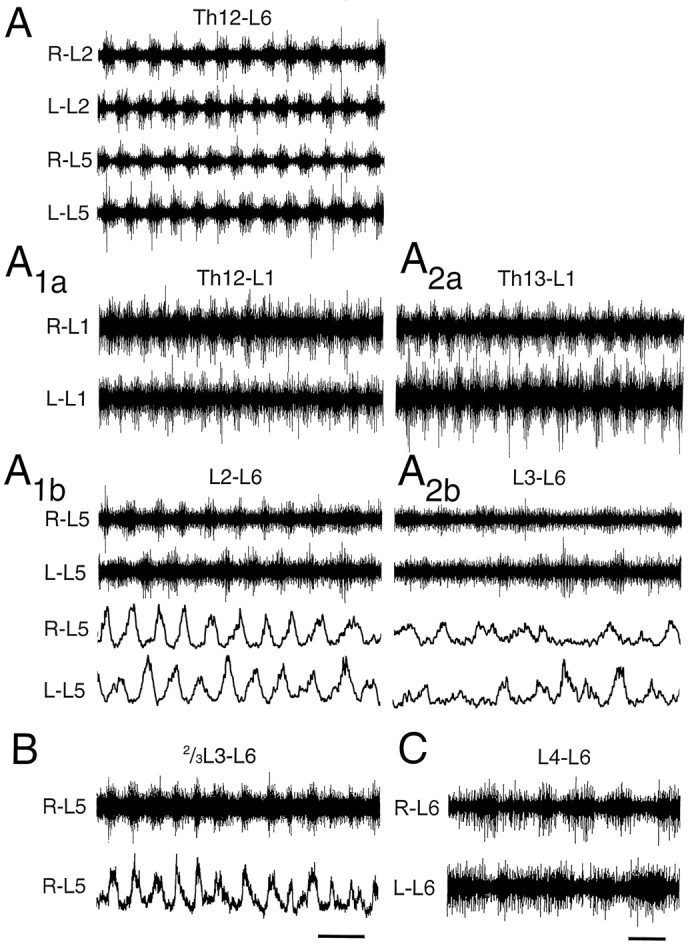Fig. 9.

Rhythmic activity in spinal cord pieces consisting of few segments. A, Rhythmic activity in a Th12–L6 preparation. After dividing the T12–L6 preparation into two shorter pieces, a rostral part consisting of the Th12–L1 segments (A1a) and a caudal part consisting of the L2–L6 segments (1A1b), rhythmic activity could still be induced in both preparations. The period was shorter in the rostral preparation and, in this experiment, also shorter than during activity before the division (A). After further reduction of the two preparations by removing Th12 from the rostral preparation (A2a) and L2 from the caudal preparation (A2b), rhythm could still be induced in both preparations. The relative modulation amplitude was now higher in the rostral than in the caudal preparation. Drug concentrations: 7.5 μm 5-HT, 7.5 μm NMDA. B, Regular bursting in a caudal preparation consisting of two-thirds of the L3 segment and the intact L4–L6 segments. C, Data from an L4–L6 preparation showing rhythmic alternation in the L6 ventral roots. Drug concentrations: 9 μm 5-HT, 6 μm NMDA (B); 4.5 μm 5-HT, 4.5 μm NMDA (C). Scale bars: 5 sec inA–A2b, 10 sec in B; 5 sec inC. Data in A–A2b, B, andC are from three different animals.
